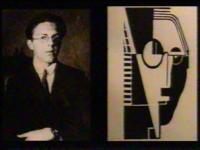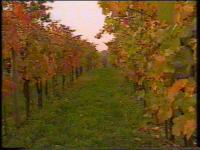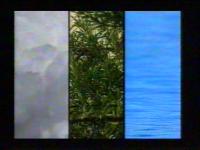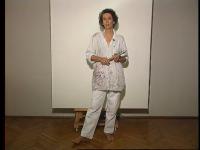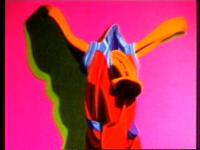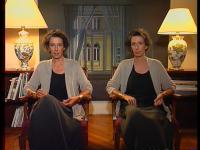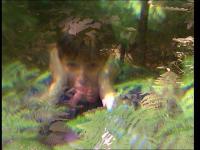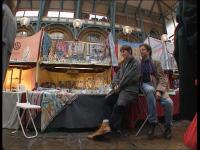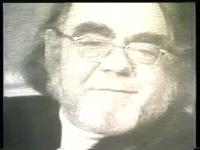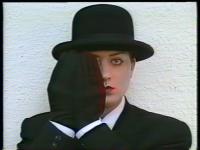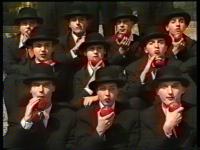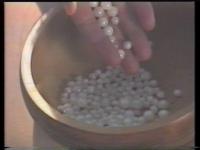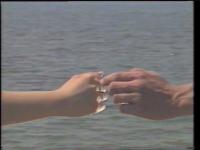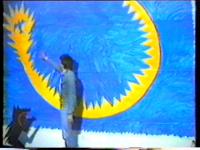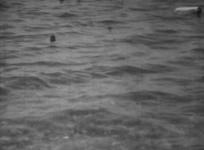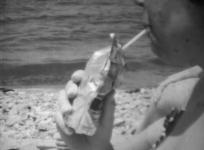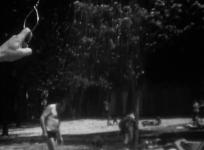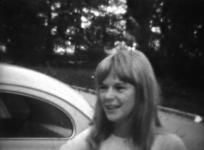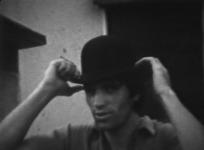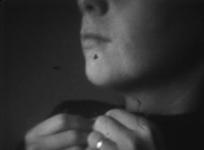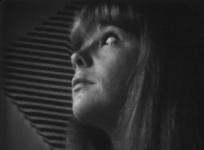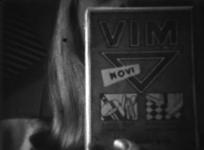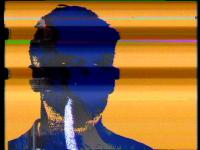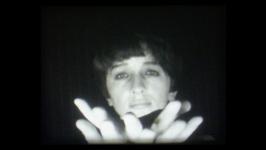Communication of Gastronomy is one of the author’s early 8mm films. The subtitle gives instructions for understanding the author's starting points: SELECTIVE RELATIONSHIP OF EVENT SUCCESSIVE OF COMMUNICATION AND ACCUMULATION - DISTRIBUTION REVERT COMMUNICATION OF APPETITE AND FOOD.
The film shows different actors sitting at a table in the garden eating different food. The camera is static; the actors enter the frame and take turns.
The film shows different actors sitting at a table in the garden eating different food. The camera is static; the actors enter the frame and take turns. About the theme of the film, Ana Nuša Dragan said: I was very interested in how different people react differently, even though they are in the same room, that everything is the same. This, too, stemmed from the psychology issues I was dealing with. At the same time, I was not so much interested in gastronomy per se, but in this visuality of food that I still love to shoot today, especially close-ups, which is tricky if you don’t want to make it look awful. Therefore, I put all the performers in the same space, behind the same table, with the same items, in the same situation. Then they ate and every thirty seconds I said “Stop” and they all stopped, each in his/her own way, each with his/her own gestures and peculiarities. I found that extremely interesting, all that you can learn about a man through a camera that can be very cruel. (Source of the statement: Nil Baskar: A Conversation with Ana Nuša Dragan, KINO! Magazine, no. 11, 12, 2010.)
Production: VPK - Video Produkcija Kregar, 2001
Srečko Kosovel's life cycle is like a raindrop, where poetry is at home. He encounters the poetry very early, in an environment that is his foundation for the first images and the realization of truth. His life knows two homes, two centers: light and dar...
Production: TV Slovenija, 2000
Metka Krašovec is a painter, an outsider, a loner, a world traveler, a professor and a wife. She is a fighter but as a woman, she has no problems in a man-determined world. On the contrary, it gives her a lot of freedom because she doesn't have to...
Production: TV Slovenija, 1994
My main concept was to present Ifigenia Zagoričnik-Simonović as a woman who managed to remain a woman in the world of men. It is a question of a woman - an artist, from the point of view of a woman who practiced various professions in order to survive. To...
Production: TV Skopje, 1990
The creation of video poetry: a scale of sequences shaped by Rene Magritte’s painting as a lyrical excess of the real world and the Macedonian landscape and architecture with distinct ethnographic dimensions. (Source: Videodokument)
Production: TV Skopje, 1989
A woman's body communicates with its surroundings; it is a receptor of the macrocosm that bears traces of all other laws, including even the physiology with all its energetic zones. This is the energy that corresponds to spiritual experiences, which also...
Production: RTV Beograd in Studentski kulturni centar Beograd, 1983
Here the discussion of video art is figured visually as well. A woman brings a videocassette to a man, and he inserts it into a video machine. The cassette features critics discussing in a variety of languages. The work aims to represent the subject of ne...
Production: Ana Nuša Dragan, 1970
After early silent black-and-white short films, this is the artist's first film that is more experimental. She shot it during the summer film school in Koper in 1968. It is already sound and colour film and it shows various expressive procedures and great...
Production: Ana Nuša Dragan, 1968
Some Information and Because of and So are the first short films by the artist: silent black and white 2x8mm films. They were created based on her interest in film and at the same time her study of psychology and pedagogy. In the 1960s, she became acquain...
Production: Ana Nuša Dragan, 1968
Because of and So and Some Information are the first short films by the artist: silent black and white 2x8mm films. They were created based on her interest in film and at the same time her study of psychology and pedagogy. In the 1960s, she became acquain...
